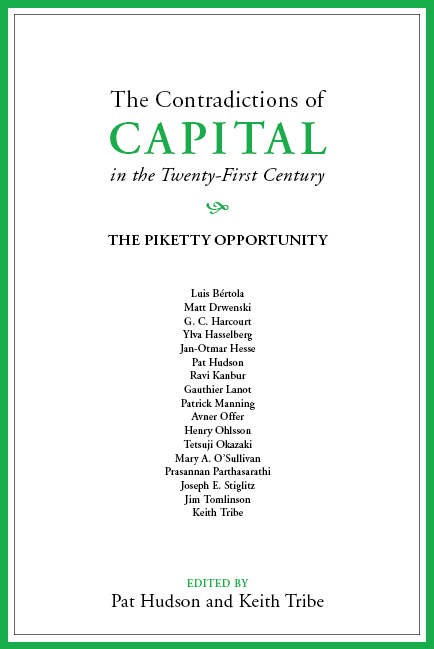
書籍名
Economies under Occupation The Hegemony of Nazi Germany and Imperial Japan in World War II
判型など
336ページ、ハードカバー
言語
英語
発行年月日
2015年3月27日
ISBN コード
978-0-41-58353-36
出版社
Routledge
出版社URL
学内図書館貸出状況(OPAC)
英語版ページ指定
第2次世界大戦期、ドイツと日本は、ヨーロッパとアジアの広大な領域を占領し、それぞれの勢力圏を「広域経済圏」、「大東亜共栄圏」と称した。本書は、第2次世界大戦期にドイツと日本の両国が広域経済圏と大東亜共栄圏を管理した様式とその結果を比較している。比較にあたっては2名の編者 (Marcel Bordorfと岡崎哲二) が共通の視点を設定し、その視点に立って編者を含む20名の専門研究者がヨーロッパとアジアの各国・地域について詳細な実証研究を行った。比較の軸は、占領の諸局面、現地政府ないし現地エリートの協力、経済管理の制度と組織、生産・貿易・金融・労働に関する統制等である。第2次世界大戦期の経済については、各国・各地域について多くの研究が蓄積されてきたが、ドイツ勢力圏と日本勢力圏を明確な共通の視点から比較した研究として、本書は初めての試みといえる。
ドイツと日本の間には占領地の管理方法に差違があった。ドイツについては、いくつかの例外があるが、ドイツ陸軍が占領地を直接的に管理した。これに対して日本の場合、「満州国」に見られるように占領地に現地人による傀儡政府を設ける場合が多かった。
占領地管理の主要な目的の一つが本国に不足する天然資源の獲得にあったことは、ドイツと日本に共通する。しかし、ドイツは代価の支払いを伴わない文字通りの略奪によって占領地の天然資源を獲得することが多かった。これに日本は、占領地に満州中央銀行、中国連合準備銀行、南方開発銀行等の中央銀行を設立し、それらが発行する通貨によって資源を購入するというアプローチを採用した。
ドイツ、日本ともに天然資源だけでなく軍需に関連する工業製品をも占領地から獲得することを意図したが、両国の占領地の産業構造には相違があった。ドイツの占領地には工業化された地域が含まれ、既存の工業を利用して工業製品を獲得することが可能であった。これに対して日本の占領地では工業が未発達であり、そのため日本は占領地、特に「満州国」において工業開発を試みた。占領地の工業化はある程度実現したとはいえ、勢力圏における工業生産の80-90%が日本本土に集中した状態にあり、日本の目的は十分に達成されなかった。
ドイツと日本の占領地管理において共通する本質的な要素として、企業の利潤動機と市場経済の役割がある。両国政府は理念的には市場経済を批判したが、少なくとも戦時経済の最終段階には利潤動機と市場経済の役割を認め、それを戦時経済運営のために利用した。
(紹介文執筆者: 経済学研究科・経済学部 教授 岡崎 哲二 / 2016)
本の目次
Part 1: The System of Occupation
2. The European economies under National Socialist Rule / Marcel Boldorf
3. Strategies and Organizations for Managing the " Greater East Asia Co-prosperity Sphere " / Tetsuji Okazaki
Part 2: War Financing
4. The German System of Financing Occupation / Jonas Scherner
5. Paying for war, 1941-1945: How Japan Financed Southeast Asia’s Occupation / Gregg Huff and Shinobu Majima
Part 3: Exploiting the Foreign Labour Force
6. Forced Labour in Occupied Europe, 1939-1945 / Mark Spoerer
7. Development of Labour Policy in "Manchukuo" and its Limit, 1933-1943 / Toshio Kojima
Part 4: Incorporation of Territories in the War Economy
8. The French Economy under German Occupation, 1940-1944 / Marcel Boldorf
9. German economic rule in occupied Belgium, 1940-1944 / Dirk Luyten
10. Nazi Germany's financial exploitation of Norway during the occupation, 1940-1945 / Hans-Otto-Frøland
11. The incorporation of the General Government in the German War Economy / Stephan Lehnstaedt
12. The Protectorate of Bohemia and Moravia under German Control, 1939-1944 / Harald Wixforth
13. The Development and Management of the Manchurian Economy under Japan’s Empire / Tetsuji Okazaki
14. The Philippine Economy during the Japanese Occupation, 1941-1945 / Gerardo P. Sicat
15. The Eclipse of the Indonesian Economy under Japanese Occupation / Thomas Lindblad
16. The Burmese Economy under the Japanese Occupation, 1942-1945 / Michael Charney and Atsuko Naono
17. Indochina during World War II: An Economy under Japanese Control / Delphine Boissaire
Part 5: Multinationals Acting in Occupied Economies
18. German Steel Industry’s Expansion in Occupied Europe: Business Strategies and Exploitation Practice / Ralf Ahrens
19. The French Opportunity: A Danish Construction Company working for the Germans in France / Steen Andersen
20. Management of the South Manchurian Railway Company / Tsutomu Hirayama
21. Shanghai’s Cotton Textile Industry during the Pacific War: Exploring Relations with Japan and the Transformation of the Economic Structure / Narumi Imai
Conclusion: Differences and Similarities of the Two Occupation Regimes / Marcel Boldorf and Tetsuji Okazaki



 書籍検索
書籍検索




